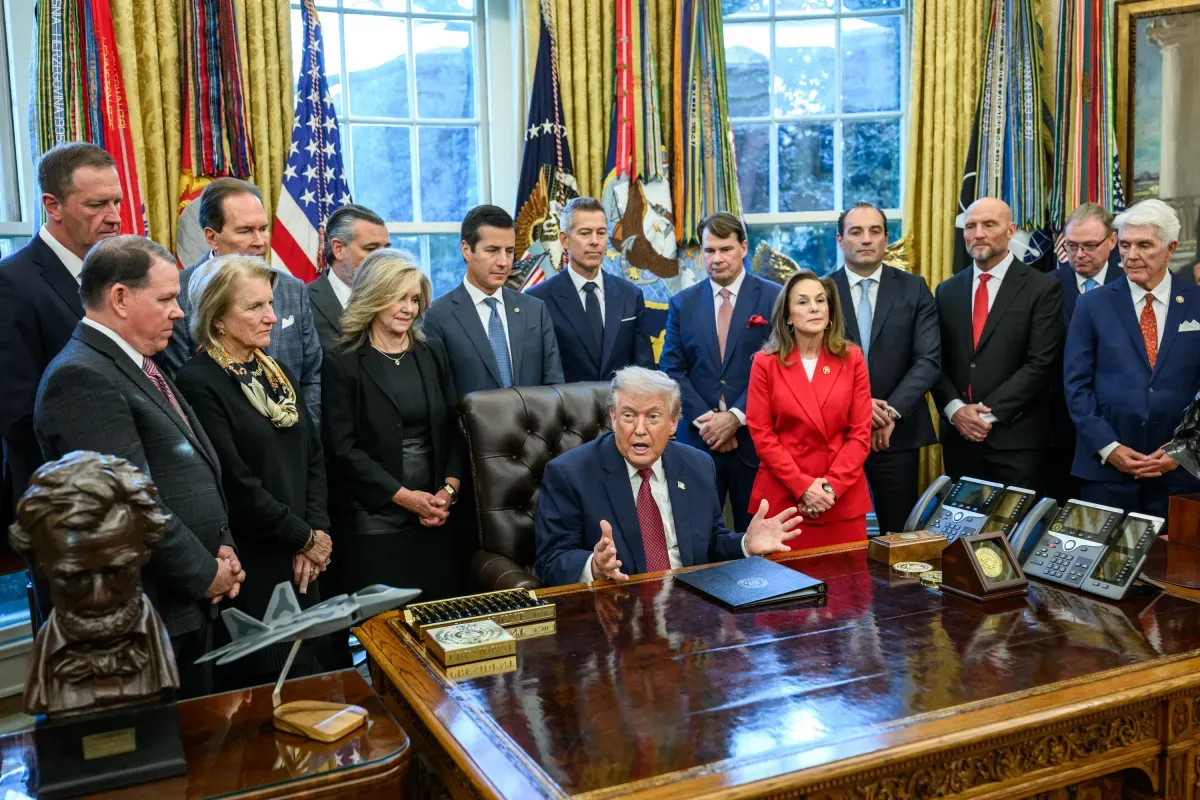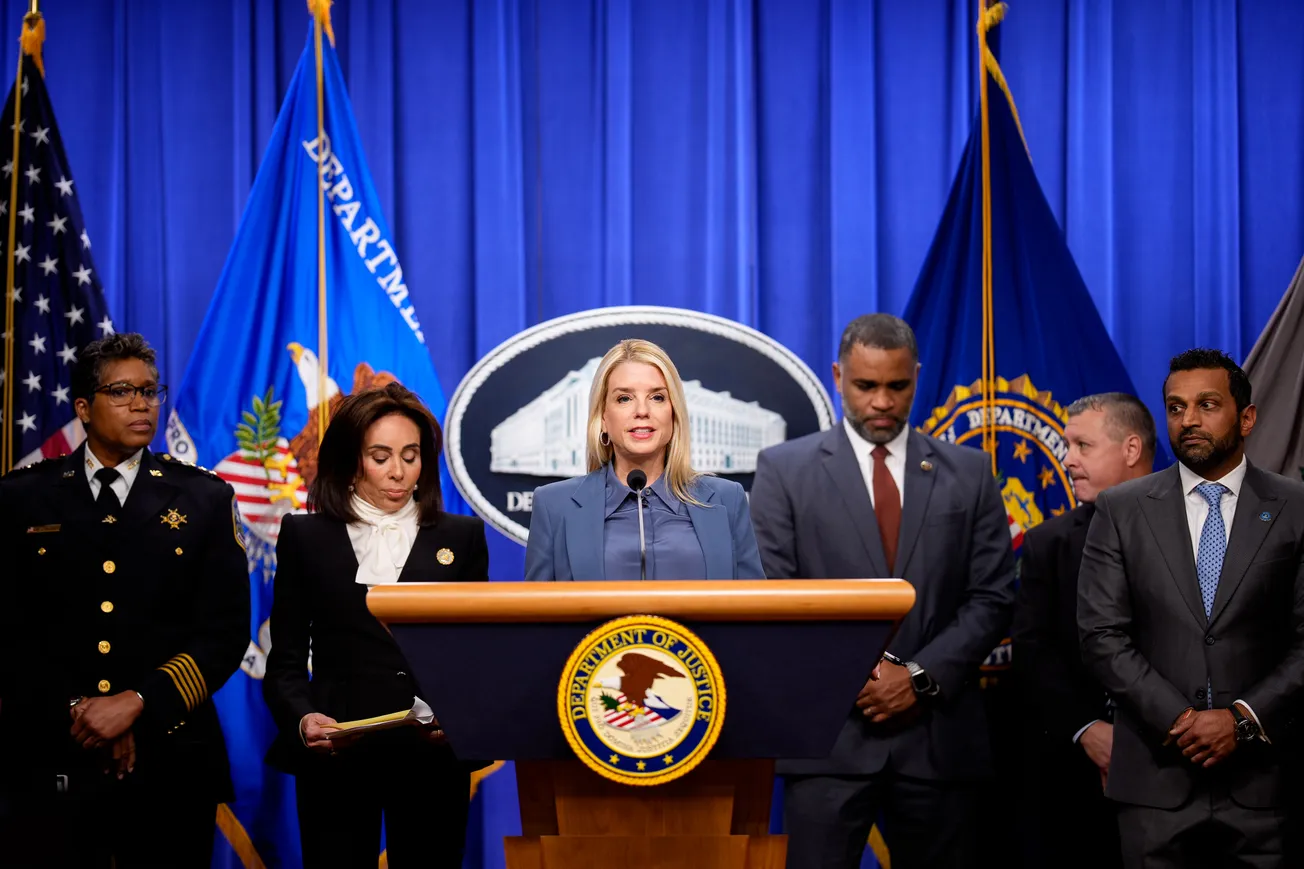By Duggan Flanakin, CFACT | February 12, 2025
Barack Obama tried but failed to enact the Green New Deal. Joe Biden, aided by California’s Nancy Pelosi, succeeded in spades – on paper, at least. Whether or not one believes that an all-electric society, aided by wind and solar (and electric shock treatment at the cash register) were environmental positives, the Biden Administration’s environmental record is incomplete without an accounting of a few other actions (and inactions).
Joe Biden literally invited President Putin to undertake a “minor incursion” into Ukraine, a country that had provided millions for his family, though Putin may claim NATO aggression as his casus belli. Biden’s financial support for Iran and its surrogates likely emboldened Hamas.
Many have said both conflicts could have been prevented through better diplomacy. No one sat any belligerents down to discuss the damage to the planet (and to the dreams of “net zero”) from an ongoing military conflict – damage that impacts people far away from the battlefields.
Similarly, neither California nor federal officials placed sufficient concern about the environmental damage (and liability) for the recent massive fires.
While California ratepayers have coughed up billions to rectify decades of mismanagement by its publicly owned utilities, former Public Utilities Commission chair Loretta Lynch admitted that the PUC “rubber-stamped outrageous costs” and allowed utilities to “address wildfires in the most expensive, least effective way possible.”
The Obama-Biden Administration in 2009 uplisted the “delta smelt” as endangered to justify increasing restrictions on water withdrawals from northern California streams – water once used for agriculture and for filling reservoirs. Nor did anyone weigh the balance between saving a few fish against the massive loss of wildlife and habitat from uncontrolled fires.
Governor Newsom had no answers, neither did Los Angeles Mayor Karen Bass, as wildfires destroyed entire towns, leaving behind mountains of toxic debris and turning recent rain and snow into an environmental threat.
It’s not as if California did not know wildfires (many with human origins) “every year emit as much carbon as almost 2 million cars.” In 2020, wildfires constituted the state’s second largest source of greenhouse gases, after transportation – increasing overall emissions by about 30%.
But California lawmakers refused to count the state’s wildfire emissions in its efforts to reduce statewide greenhouse gases. With 30% of total emissions coming from wildfires, one would think any attempt to meet Governor Newsom’s goal of net zero by 2045 would include better strategies for reducing wildfire emissions.
Apparently, there are a lot of ostriches in Sacramento.
Sadly, as the Epoch Times reported, carbon dioxide (and methane) emissions are hardly the only environmental damages from last month’s (ongoing) Los Angeles wildfires. Just two of the fires burned through about 60 square miles, destroying more than 16,000 homes and office buildings.
In the aftermath, the Army Corps of Engineers will remove six inches of soil from damaged and destroyed properties. Air, water, and soil testing is necessary because of the volume of melted electric cars, solar panels, gas tanks, lithium-ion batteries, plastics, asbestos, and more released by the horrific fires.
Beaches are closed because of debris washed away by recent rains. Potential damage to the health of those returning to the fire-impacted areas may be akin to that from the Twin Towers attack.
Where was the due diligence to minimize the impacts of these fires?
No government agency in California, laments Jane Williams, executive director of California Communities Against Toxics, is reliably tracking toxins unleashed by these fires.
Of course, no one would dare argue that all wildfires in fire-prone areas of California can be prevented – but most, if not all, can be brought under some control with better preparation.
While the California fires were a major U.S. disaster, the damage they caused pales in comparison to the ongoing damages in Gaza, Ukraine, and Russia from violent wars.
Last June the United Nations Environmental Programme called the environmental impacts of the war in Gaza “unprecedented,” exposing anyone living there to soil, water, and air pollution and risks of irreversible damage to natural ecosystems. UNEP executive director Inger Andersen begged in vain for an immediate ceasefire “to save lives and restore the environment.”
Gaza was not a paean of environmental purity before its leaders prompted the Israeli response, which eight months ago had already generated an estimated 39 million metric tons of debris that poses risks to human health and the environment.
Water, sanitation, and hygiene systems were already destroyed, solid waste management systems were badly damaged, solar panels were in tatters — plus heavy metals and explosive chemicals from munitions and groundwater contamination from clearing out the massive tunnel system.
But did anyone rein in Hamas before October 7, 2023, to warn of the environmental consequences of starting a war with the neighbor that supplied Gaza with electricity and other public goods? Did anyone recognize that the United Nations Relief and Works Agency was heavily staffed with people more willing to wage war than build a Gazan economy?
Frontiers in Human Dynamics suggests that, by addressing the root causes of the conflict, supporting sustainable reconstruction efforts, and promoting environmental protections even in war-torn regions, the “global community” can begin to mitigate the lasting impact of conflicts like this one. But it will take the entire village to change the culture of war and hatred.
While the UNEP calls the Gaza environmental damage “unprecedented,” the total destruction in Gaza is but a fraction of the human death and dislocation and environmental destruction during the much longer Russia-Ukraine war that has devastated the “breadbasket of the world.”
The U.S. Helsinki Commission last June said that a decade of Russian aggression against Ukraine had inflicted some $60 billion in damages to Ukraine’s natural and manmade environments and pushed the country to the brink of ecological collapse. That was eight months ago, and the war continues.
The Commission reported that vast swaths of Ukraine had been contaminated with landmines, toxic chemicals, and heavy metals; hundreds of thousands of square miles of agricultural lands were decimated, their groundwater contaminated, and nature reserves consumed by fire.
The catastrophic destruction of the Nova Kakhovka dam took away irrigation and sanitation water – and that is just a barebones description of the ongoing damage that does not mention damages Ukraine has inflicted to the East.
But the UNEP had bemoaned the environmental destruction 14 months earlier, and the European Parliament too had reported on the threat to climate change from the war in mid-2023. A toxicology assessment noted that international law mandates that methods of warfare must be implemented with “due regard to the protection and preservation of the natural environment.”
But does anyone seriously think that in Gaza or Ukraine “reconstruction” will happen any time soon? Or that any reconstruction in war-torn areas will be aided by a “just and lasting peace” while the root of these conflicts remains unaddressed?
The previous administration’s touted focus on the environment was so heavily skewed to technological fixes that destroyed existing industries that it failed to fully consider or undertake the necessary diplomacy to prevent destructive wars. Similarly, California’s focus on vehicle emissions and “net zero” largely ignored prioritizing fire prevention and control.
Hopefully, new leadership in Washington – and around the planet – can do a better job.
Duggan Flanakin is a Senior Policy Analyst with the Committee For A Constructive Tomorrow. A former Senior Fellow with the Texas Public Policy Foundation, Mr. Flanakin authored definitive works on the creation of the Texas Commission on Environmental Quality and on environmental education in Texas. A brief history of his multifaceted career appears in his book, "Infinite Galaxies: Poems from the Dugout."
Original article link









